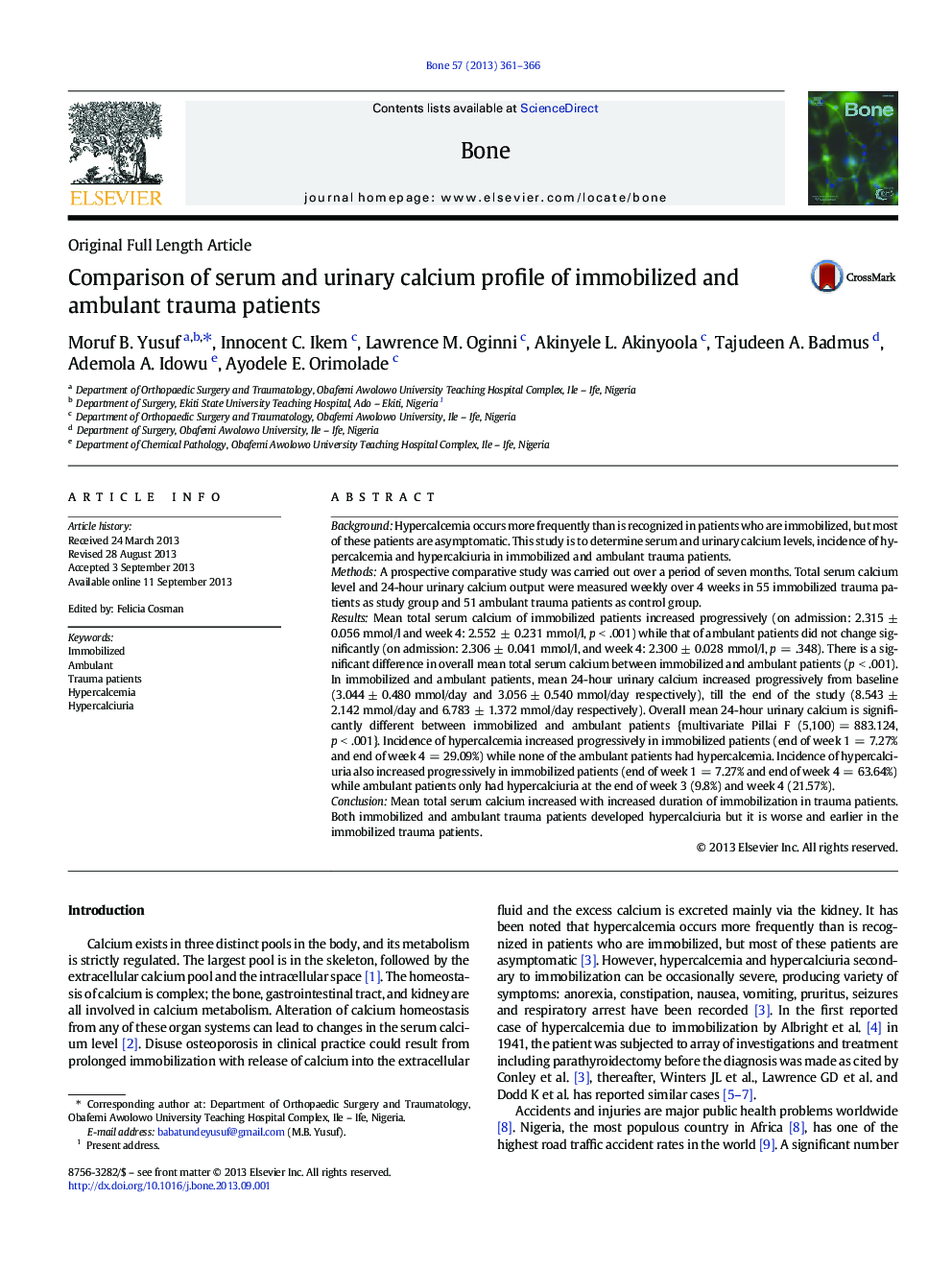| کد مقاله | کد نشریه | سال انتشار | مقاله انگلیسی | نسخه تمام متن |
|---|---|---|---|---|
| 5890562 | 1153255 | 2013 | 6 صفحه PDF | دانلود رایگان |
- Immobilized trauma patients had higher mean total serum calcium during the four week observation period compared to ambulant trauma.
- Both groups had increasing mean 24-hour urinary calcium during the four week observation period with higher level in immobilized patient.
- Percentage hypercalcemia increased with increased period of observation t in immobilized patients while none in ambulant patients.
- Both immobilized and ambulant patients had hypercalciuria during the four week observation period with higher percentage in immobilized patients.
BackgroundHypercalcemia occurs more frequently than is recognized in patients who are immobilized, but most of these patients are asymptomatic. This study is to determine serum and urinary calcium levels, incidence of hypercalcemia and hypercalciuria in immobilized and ambulant trauma patients.MethodsA prospective comparative study was carried out over a period of seven months. Total serum calcium level and 24-hour urinary calcium output were measured weekly over 4 weeks in 55 immobilized trauma patients as study group and 51 ambulant trauma patients as control group.ResultsMean total serum calcium of immobilized patients increased progressively (on admission: 2.315 ± 0.056 mmol/l and week 4: 2.552 ± 0.231 mmol/l, p < .001) while that of ambulant patients did not change significantly (on admission: 2.306 ± 0.041 mmol/l, and week 4: 2.300 ± 0.028 mmol/l, p = .348). There is a significant difference in overall mean total serum calcium between immobilized and ambulant patients (p < .001). In immobilized and ambulant patients, mean 24-hour urinary calcium increased progressively from baseline (3.044 ± 0.480 mmol/day and 3.056 ± 0.540 mmol/day respectively), till the end of the study (8.543 ± 2.142 mmol/day and 6.783 ± 1.372 mmol/day respectively). Overall mean 24-hour urinary calcium is significantly different between immobilized and ambulant patients {multivariate Pillai F (5,100) = 883.124, p < .001}. Incidence of hypercalcemia increased progressively in immobilized patients (end of week 1 = 7.27% and end of week 4 = 29.09%) while none of the ambulant patients had hypercalcemia. Incidence of hypercalciuria also increased progressively in immobilized patients (end of week 1 = 7.27% and end of week 4 = 63.64%) while ambulant patients only had hypercalciuria at the end of week 3 (9.8%) and week 4 (21.57%).ConclusionMean total serum calcium increased with increased duration of immobilization in trauma patients. Both immobilized and ambulant trauma patients developed hypercalciuria but it is worse and earlier in the immobilized trauma patients.
Journal: Bone - Volume 57, Issue 2, December 2013, Pages 361-366
